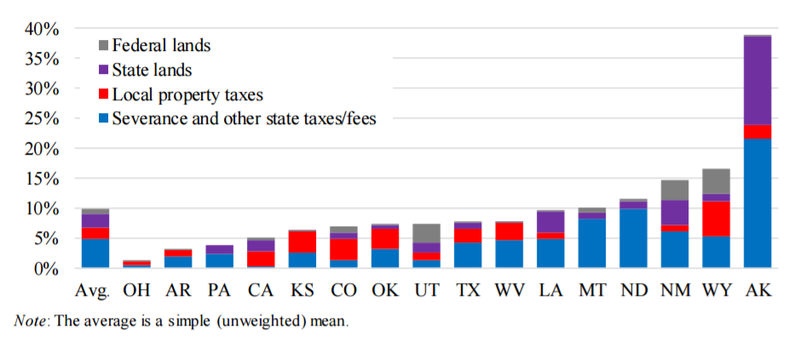Local Government Impacts of Unconventional Oil and Gas Development
This report reviews the academic literature analyzing the effect of unconventional oil and gas development on local public finance outcomes including a review on the truck traffic literature, a specific subset of these local government outcomes.
Figures
Figure 1. Fiscal Impacts across Counties and Drilling Intensity in 16 States

Figure 2. Sources of Government Revenues as a Share of Oil and Gas Production Value in FY 2013

Figure 3. Severance Tax Calculation Method Across States

Key findings
- We review 19 studies. Eight focus on the impacts of development on local public finances, with two studies analyzing these changes as a part of larger studies. Nine assess truck traffic impacts, including surveys, traffic, road damages, and accidents.
- The findings of the studies show that local areas, even within the same state, can see a wide variety of impacts, often depending on preexisting local factors and capacity. The studies assessing effective tax rates show that these vary widely as well.
- Development increases the number of accidents as well as road damages, which become quite costly to local areas, as revealed by the local finance literature, and as measured by the truck traffic literature.
- Overall, the literature shows that local areas are generally able to manage increased costs (including truck traffic costs), though some regions—particularly rural areas with rapid development—are less able to effectively respond to these changes.






